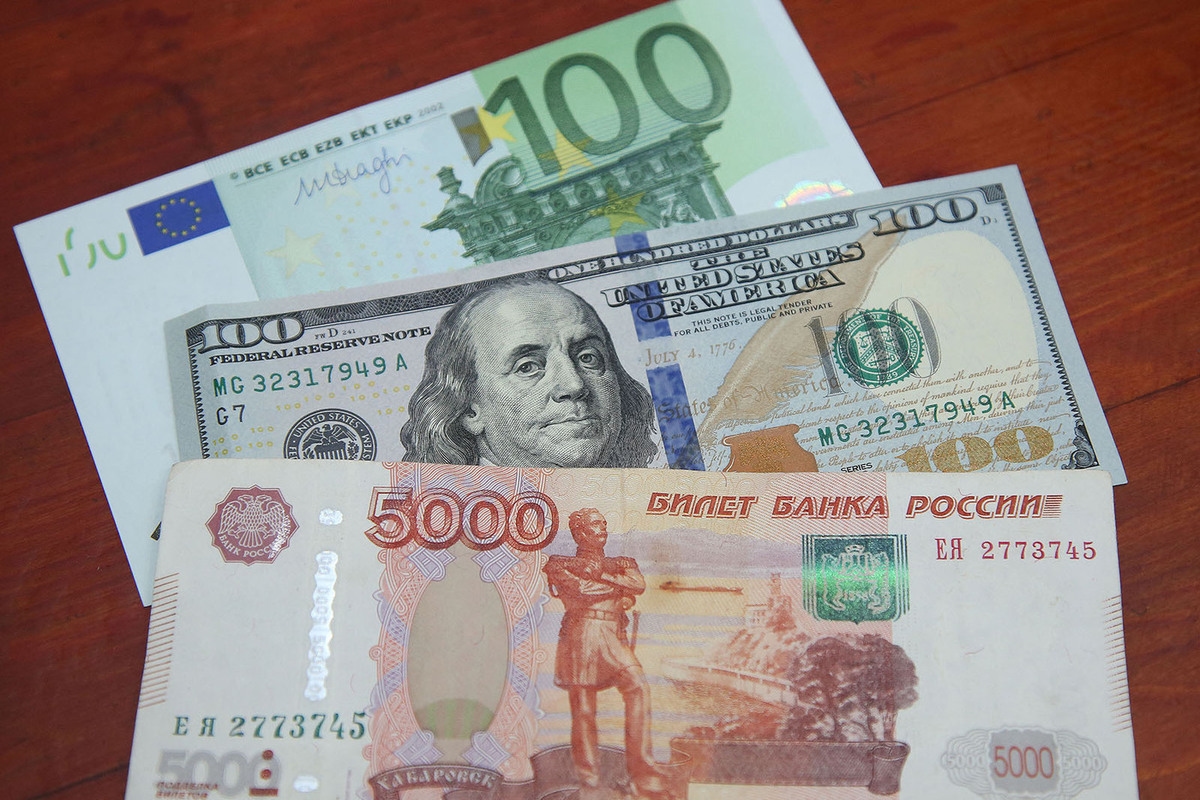Currency market in November: what's happening with the dollar and ruble exchange rates

Significant events are taking place in the global financial market, which is reflected in the Russian currency. At the very end of October, the Federal Reserve System (FRS) – the US central bank – lowered its interest rate from 4.25% to 4%. And the ruble ended October with a strong strengthening. The yuan exchange rate rose by 2% over the month.
On the over-the-counter market, the US dollar also fell by 2% in October, while the euro lost 3.6%. What will happen on the currency market in November, and how will the ruble and dollar exchange rates change in the last month of autumn? MK addressed these questions to experts: Mark Goykhman, an expert at ForexBY, and Natalia Milchakova, a leading analyst at Freedom Finance Global.
Let's start with the dollar. What consequences does the Fed's rate cut have for the American currency?
Goykhman:
"This was expected. The need for it is too strong. We need to stimulate economic growth and support businesses with more accessible loans. President Donald Trump has been actively pushing for this step. A rate cut will ease the impact of the enormous US national debt, which exceeded $38 trillion in October. And inflation at 3% provides scope for rate easing."
– What consequences does all this have for the global economy?
Goykhman:
The Federal Reserve's interest rate affects the global economy. Despite active de-dollarization, the American currency remains key in international settlements, loans, reserves, and prices. Lowering the rate reduces the debt burden not only in the US but also in many other countries, stimulating investment and business activity. However, this leads to a reduction in the return on dollar investments, which typically has a negative impact on the exchange rate.
– And what happens to the dollar as a result?
Goykhman:
Following the Fed's announcement, the dollar, contrary to expectations, strengthened rather than weakened. The USDX index, which measures its exchange rate against six major currencies, rose from 98.4 to 99.6.
This paradox is largely explained by the fact that the market had already priced in the expected rate cut. This contributed to the dollar's weakening in October. This was reflected, among other things, in the ruble's strengthening to 78-79 rubles per dollar. The Fed's verdict was not unexpected, so it did not weaken the dollar.
- What will happen to the dollar next?
Goykhman:
But the Fed's unexpected signals for the future proved more important. They were more conservative than expected. The regulator indicated that, due to the government shutdown and the release of statistical data, it may exercise caution in further rate cuts. There is also a remaining risk that high tariffs on US imports, imposed by Trump, could contribute to inflation. As a result, investors revised down their expectations for a rate cut at the Fed's December 10 session. The probability of such an event fell from 86% to 63%. And the dollar received support due to the possibility of maintaining a high interest rate.
– Did the October 30 meeting between Donald Trump and Chinese President Xi Jinping have any impact on the situation?
Goykhman:
Yes. The American president called it "wonderful." An agreement was reached there to reduce tariffs on Chinese goods imported into the US from 57% to 47%. This marked a reversal of Trump's earlier threats to impose 100% tariffs, which had weakened the dollar in October.
Importantly, the risk of trade wars between Washington and Beijing, which would be detrimental to the global economy, has diminished. This is also positive for Russia, as it could support overall demand for commodities.
– What happened to the ruble in October?
Milchakova:
– Traditionally, the ruble strengthens during the third ten-day period of each month during the tax period, but often weakens at the beginning of each new month. October turned out to be one of the most successful months of the year for the ruble.
Demand for foreign currency was quite moderate, primarily due to low import demand and Russian exporters' transition to ruble payments. It's quite possible that these trends will continue to impact the ruble exchange rate in November, so we don't expect a significant decline. However, we don't rule out the possibility of sanctions risks affecting the ruble throughout November and beyond.
– What factors will influence the exchange rate in November?
Milchakova:
– In November, exchange rates will not be affected by the results of central bank interest rate meetings, as the next meetings of the Bank of Russia, the US Federal Reserve, and the European Central Bank (the final ones for 2025) will not take place until December. If October inflation data and November inflation expectations prove optimistic, they could provide the basis for ruble strengthening from mid-month.
The G20 summit, tentatively scheduled for late November in South Africa and attended by Russian President Vladimir Putin, could be rich in important political announcements, and the currency market will certainly heed them. Oil prices could be highly volatile in November due to surplus expectations.
– What will happen to the ruble exchange rate?
Milchakova:
The ruble could also be quite volatile against the backdrop of November. However, it appears the ruble may respond to negative news with a decline in the short term, and in the medium term, resume strengthening, primarily due to low demand for foreign currency. We expect the dollar exchange rate in November to be 79-85 rubles, the euro 91-97 rubles, and the yuan 10.9-11.9 rubles.
Goykhman:
The combination of the above-mentioned factors has strengthened the dollar in recent days. And, among other factors, contributed to its rise against the ruble: the exchange rate rose from 78.9 to 81 rubles per dollar. This was also influenced by the end of the tax period in Russia at the end of the month, with increased currency sales by exporters. In November, the combination of these and other factors could keep the ruble mostly in the 80-84 rubles per dollar range.
mk.ru


